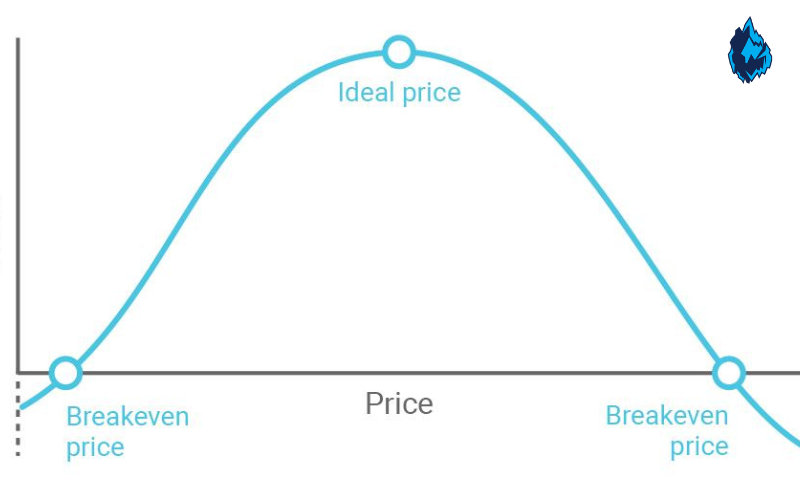Designing a robust business plan requires careful consideration of your pricing strategy. Regardless of your offering, the prices you set significantly influence your company’s financial objectives. Identifying the optimal price point involves more than guesswork; it demands a well-crafted approach that aligns with consumer preferences and market dynamics.
Understanding Pricing Strategy
At its core, a pricing strategy encompasses the methodologies employed by business owners to ascertain the pricing of their offerings. While some may opt for straightforward approaches like cost-plus pricing or manufacturer-suggested retail prices (MSRPs), a robust pricing strategy delves deeper into market conditions and consumer behavior, offering a competitive edge within the industry.
Benefits of a Thoughtful Pricing Strategy
A well-crafted pricing strategy not only enables consumers to compare prices effortlessly but also aids businesses in meeting customer expectations while ensuring profitability. By integrating market insights and competitive analyses, a pricing strategy fosters a repeatable process that resonates with target audiences, driving conversions and enhancing brand perception over time.
Creating Your Pricing Strategy: 5 Essential Tips
Feeling overwhelmed? Don’t fret. Here are five fundamental steps to guide you in devising an effective pricing strategy:
- Align with Business Goals: Understand your overarching objectives—whether it’s maximizing sales volume, achieving specific revenue targets, or expanding market share—and tailor your pricing strategy accordingly.
- Conduct Market Analysis: Delve into market dynamics, scrutinize competitors’ pricing strategies, and discern where your offerings stand to inform your pricing decisions effectively.
- Know Your Audience: Base your pricing on the perceived value your product or service offers to your target audience, ensuring alignment with their preferences and purchasing behavior.
- Explore Pricing Options: Research various pricing strategies—such as cost-plus pricing, value-based pricing, and penetration pricing—to identify the approach best suited to your business goals and market landscape.
- Iterate and Adapt: Continuously monitor consumer behavior, market trends, and competitors’ pricing, and be prepared to adjust your pricing strategy accordingly to optimize results.
Conducting a Pricing Analysis in 5 Steps
A comprehensive pricing analysis is instrumental in refining your pricing strategy. Follow these steps to conduct a thorough analysis:
- Define Objectives: Identify specific pricing objectives aligned with your business strategy, whether it’s boosting sales volume or enhancing profit margins.
- Analyze Costs: Gain insights into your fixed and variable costs to optimize pricing and maximize profitability.
- Understand the Market: Conduct market research and analyze competitors’ pricing strategies to gauge consumer preferences and market dynamics.
- Assess Price Sensitivity: Conduct a price sensitivity analysis to understand how price changes may influence consumer behavior and inform pricing decisions accordingly.
- Develop a Strategy: Based on your analysis, craft a comprehensive pricing strategy that aligns with your objectives, market dynamics, and price sensitivity insights.
10 Best Pricing Strategy Examples
Price Skimming
Price skimming is a pricing strategy where a company initially sets high prices for a product and then gradually lowers them over time. This approach aims to maximize revenue by targeting early adopters willing to pay a premium before capturing a broader market with reduced prices.
Penetration Pricing
Penetration pricing is a pricing strategy where a company sets low initial prices for its products or services to quickly gain market share. This approach aims to attract customers by offering competitive pricing, often below the prices of competitors, with the intention of eventually raising prices once a significant market presence is established.
Competitor Pricing
Competitor pricing is a pricing strategy where a company sets its prices based on the prices set by its competitors for similar products or services. This approach involves monitoring and analyzing the pricing strategies of competitors and adjusting one’s own prices to remain competitive in the market. The goal of competitor pricing is to attract customers by offering comparable prices or by undercutting competitors’ prices while still maintaining profitability.
Premium Pricing
Premium pricing is a pricing strategy where a company sets higher prices for its products or services compared to competitors. This approach is often used to position the brand as offering superior quality, luxury, or exclusivity, thereby appealing to customers who are willing to pay more for perceived value. Premium pricing can help companies achieve higher profit margins and build a strong brand image, but it also requires delivering on the promise of superior quality or features to justify the higher prices to customers.
Loss Leader Pricing
Loss leader pricing is a strategy where a company deliberately sets the price of a product or service below its cost with the intention of attracting customers and driving sales of other profitable items. By offering a loss leader, businesses aim to entice customers into their stores or onto their platforms, hoping that they will make additional purchases alongside the discounted item, ultimately resulting in overall profitability despite the initial loss incurred.
Pricing Example

Apple, a leading player in the technology industry, employs a strategic pricing approach known as price skimming to maximize revenue. This method involves initially setting higher prices for products, then gradually reducing them as competitors enter the market.
Throughout its history, Apple has consistently applied this tactic, particularly evident in its product launches. For instance, when unveiling new phone models, Apple typically starts with premium pricing, later adjusting prices in response to competitor activity, such as Samsung’s market entry.
This approach aligns with the foundational principles established by Steve Jobs, emphasizing product focus, premium positioning, revenue prioritization, and the creation of a halo effect to drive customer demand for Apple’s innovative offerings.
Attributes of a Strong Pricing Strategy
A winning pricing strategy:
- Portrays value effectively
- Encourages customer purchases
- Instills confidence in your product or service
Conversely, a weak pricing strategy:
- Misrepresents the value proposition
- Creates uncertainty among customers
- Targets the wrong customer segment
Mastering Pricing for Success
Crafting an effective pricing strategy is crucial for business success, enabling you to set prices that resonate with your customers while maximizing profitability. By leveraging market insights, understanding consumer behavior, and iteratively refining your approach, you can unlock the full potential of your pricing strategy to drive growth and achieve your business objectives.
If you want to learn more about pricing, we recommend taking a read through our price anchoring article here.
